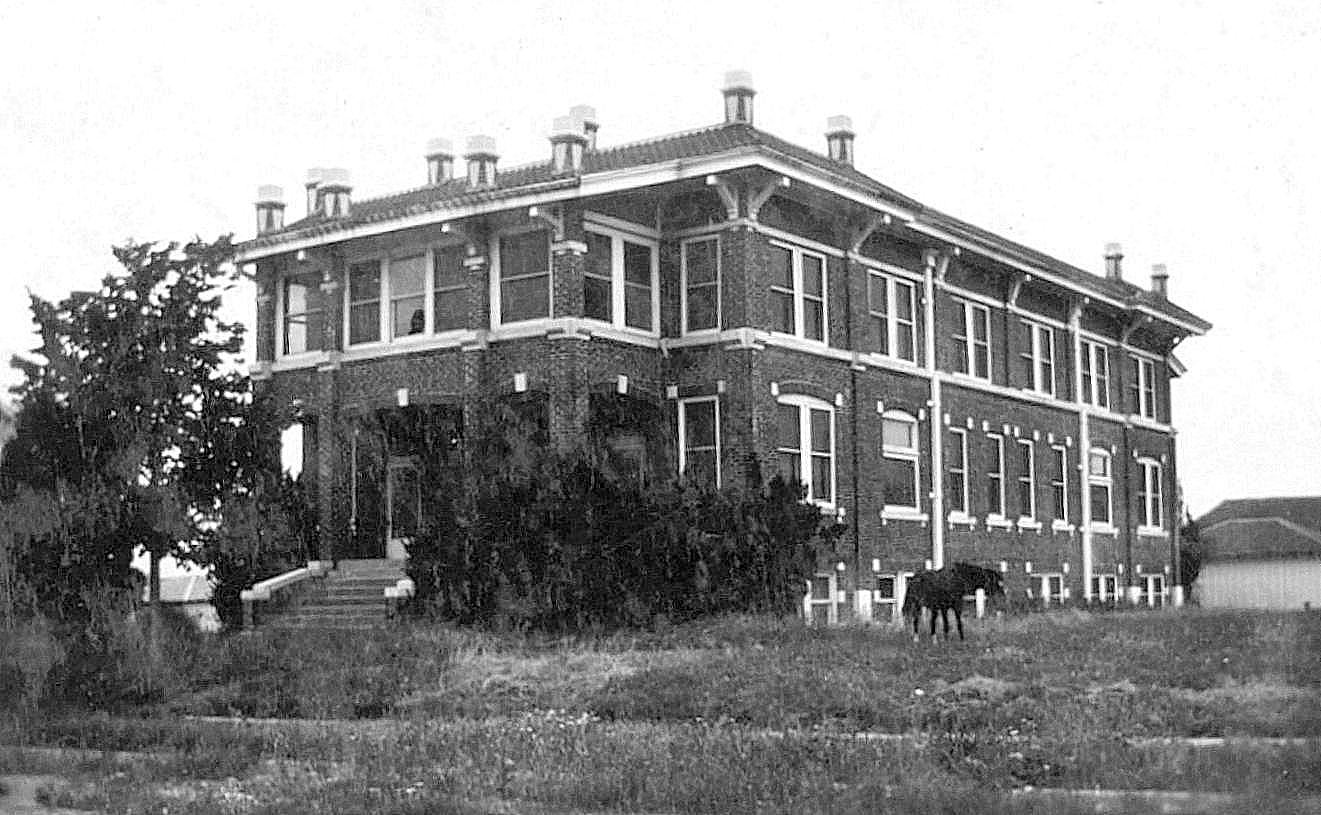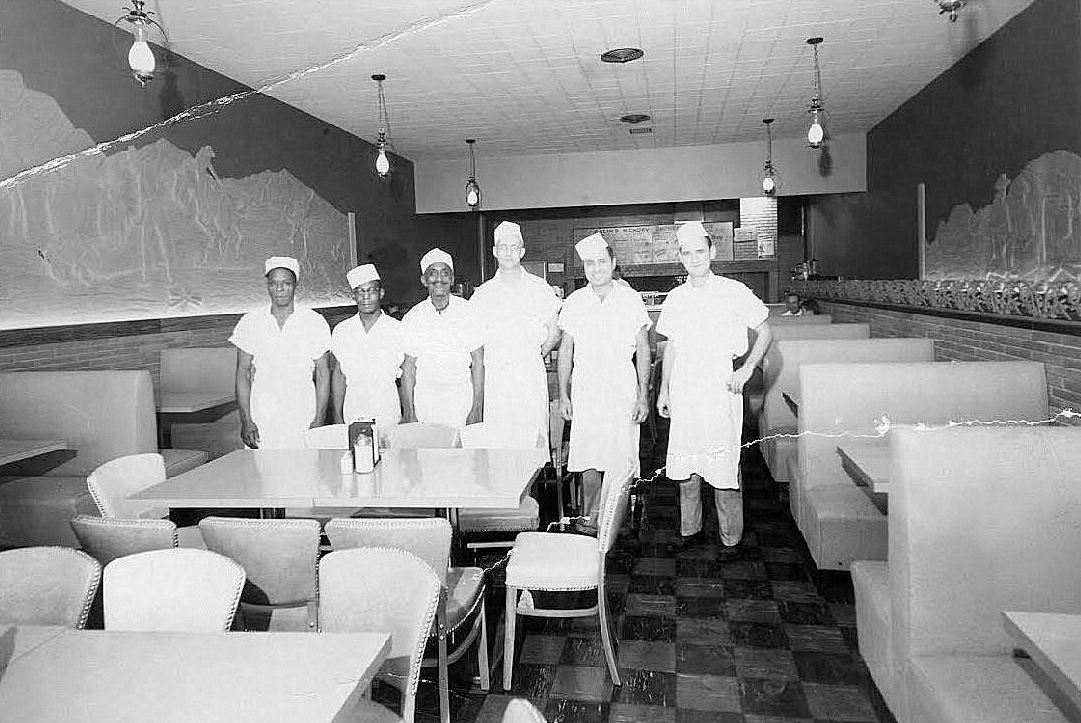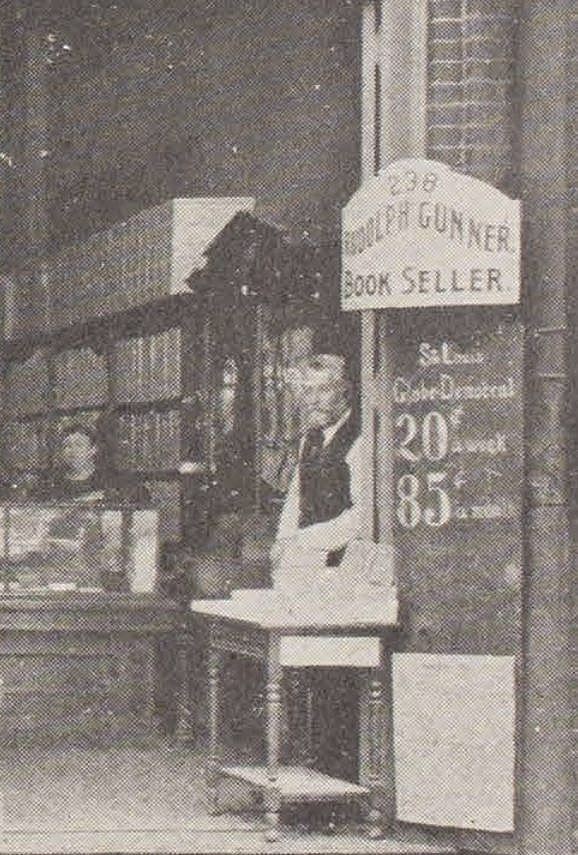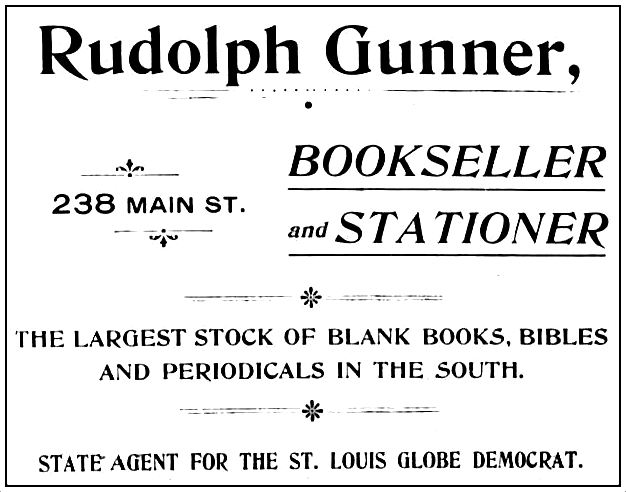A Few Photo Additions to Past Posts — #23
 Hometown hero… (Dallas Historical Society)
Hometown hero… (Dallas Historical Society)
by Paula Bosse
Time for another installment of whatever this is, in which I add photos I’ve recently come across to old posts on the same topic, in order to keep things together.
*
The photo above shows baseball great (and Dallas native) Ernie Banks, and his wife, Mollye, on a trip back to Dallas to participate in an all-star game and to be the man of the hour on Ernie Banks Day in Big D (Oct. 11, 1955). I’ve added this photo to the 2014 post “Ernie Banks: From Booker T. Washington High School to the Baseball Hall of Fame to the Presidential Medal of Freedom.” (Source: John Leslie Patton Jr. Papers, Dallas Historical Society, Object ID V.86.50.902)
*
Below is a somewhat odd-looking, down-at-the-heels house, as seen in 1975 — at the time, it was the HQ for community radio station KCHU. The once-palatial residence, built in 1897, was on Maple Avenue, a favorite residential street of the upper crusters. It still stands, and is, somehow, more beautiful today than it was when it was built 127 years ago. It is now Hotel St. Germain (2516 Maple). I’ve added this screenshot of a house that has seen some STUFF to a post from 2019, “The Murphy House — Maple Avenue.” (Source: screenshot and detail from footage shot in December 1975 by KERA-Channel 13, probably for their local show “Newsroom”; KERA Collection, G. William Jones Film and Video Collection, Hamon Arts Library, SMU — watch the short report about KCHU on YouTube here)
*
This photo shows the former Powell University prep school at Binkley and Hillcrest, across from SMU. The school was dissolved in 1927/1928. This photo is from 1931, and the old place is looking a little shaggy. Not sure what it was at that time. The building still stands (or last time I looked, anyway!). Nice to see a horse grazing on the property (in the Park Cities…). This photo has been added to 2019’s “Send Your Kids to Prep School ‘Under the Shadow of SMU’ — 1915.” (Source: Brown Book, University Park Public Library)
*
In 2014, I wrote about the Metzger’s Milk home delivery drivers wearing a new uniform, which included Bermuda shorts and knee socks. This was pretty shocking at the time, and it made news around the country — it was featured in Life magazine, and there was even newsreel footage. I’ve added the silent footage to the post “Metzger’s Milkmen in Bermuda Shorts — 1955.” Watch the 1-minute silent clip from 1955 here. (Source: Grinberg, Paramount, Pathe Newsreels, via Getty Images)
*
For those who couldn’t afford to be a member of the swanky Lakewood Country Club, the nearby Bob-O-Links course was the affordable neighborhood answer for those looking to play an affordable round of golf. This matchbook cover art has been added to 2016’s “Bob-O-Links Golf Course — 1924-1973.” (Source: eBay)
*
I haven’t had a Great Flood mention in a while. I’ve added this photo (a real photo postcard) to the 2015 post about a boat that served an important role in rescuing victims, “The Nellie Maurine: When a Pleasure Boat Became a Rescue Craft During the Great Trinity River Flood of 1908.” (Source: John Miller Morris collection of Texas real photographic postcards and photographs, DeGolyer Library, SMU, here)
*
A photo of the all-dressed-up Oriental Hotel (southeast corner of Commerce & Akard), draped in bunting and various festoonage to welcome the Elks Convention to Dallas in The Year of Our Flood 1908, is now squeezed into 2022’s “Elks-a-Plenty — 1908.” Note the woman with the parasol at the bottom right corner. (Source: eBay)
*
Fast-forward to 1939 and a screenshot from a fantastic bit of color (!!) film brought to our attention a few years ago by author Mark Doty and local bon vivant Robert Wilonsky (I HIGHLY encourage you to watch the short film here). It shows the legendary (to me, anyway) animated neon Coca-Cola sign which once stood at the 3-way downtown intersection of Live Oak, Elm, and Ervay. I’ve added it to “Tomorrow’s Weather at Live Oak & Elm — 1955-ish,” from 2016. (Source: screenshot from a 1939 color film — see link above to watch it)
*
I posted about Salih’s earlier this year, and Mark Salih, the son of co-owner Jack Salih, sent me this photo showing the interior of the restaurant and a glimpse of the carved Western mural on the walls. Owner George Salih is on the far right, and his brother Jack is next to him. I’ve added it to “Salih’s, Preston Center: 1953-1977.” (Source: Mark Salih, used with permission — thank you, Mark!)
*
Finally, I recently updated an old post from 2014, “Ned Riddle: Dallas Artist and Creator of ‘Mr. Tweedy.'” My parents were fans of the Mr. Tweedy single-panel comic that appeared in newspapers around the country, and I used to read those little books over and over. Poor Mr. Tweedy. Nothing ever went right for him! I added this panel to the post. (Source: somewhere online — the panel appeared in newspapers on Nov. 5, 1969)
**
That should do it for now!

*
Copyright © 2024 Paula Bosse. All Rights Reserved.


















 Col. John C. McCoy
Col. John C. McCoy






 Dallas Morning News, Oct. 2, 1904
Dallas Morning News, Oct. 2, 1904


















